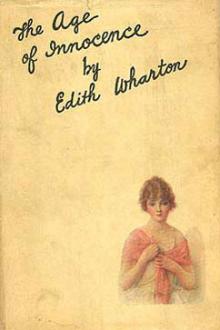author - "Edith Wharton"

m, andjudged them with the contemptuous lucidity of nearly twentyyears of dependence. But at the present moment her animositywas diminished not only by the softening effect of love but bythe fact that she had got out of those very people more--yes,ever so much more--than she and Nick, in their hours of mostreckless planning, had ever dared to hope for."After all, we owe them this!" she mused. Her husband, lost in the drowsy beatitude of the hour, had notrepeated his question; but she

his saggingpocket. At intervals, however, the post-master would hand him anenvelope addressed to Mrs. Zenobia-or Mrs. Zeena-Frome, and usuallybearing conspicuously in the upper left-hand corner the address ofsome manufacturer of patent medicine and the name of his specific.These documents my neighbour would also pocket without a glance, asif too much used to them to wonder at their number and variety, andwould then turn away with a silent nod to the post-master.Every one in Starkfield knew him

beneath the rose-trees; and here and there a daisy grafted on a rose-branch flowered with a luxuriance prophetic of Mr.Luther Burbank's far-off prodigies.In the centre of this enchanted garden MadameNilsson, in white cashmere slashed with pale blue satin,a reticule dangling from a blue girdle, and large yellowbraids carefully disposed on each side of her muslinchemisette, listened with downcast eyes to M. Capoul'simpassioned wooing, and affected a guileless incomprehensionof his designs

Description The House of Mirth is Edith Wharton’s biting critique of New York’s upper classes around the end of the 19th century. The novel follows socialite Lily Bart as she struggles to maintain a precarious position among her wealthy friends in the face of her own diminished finances and fading youth. Lily has resolved to gain social and financial security by marrying into wealth, but callous rivals and her own second thoughts undermine Lily’s plans. Wharton’s insights into high society were

Description Edith Wharton’s controversial novel Summer is the story of Charity Royall, an ambitious young woman trapped in a stifling small town by both her gender and her social class. When a visiting stranger arrives in town, Charity is awakened to a wider world of possibilities and to the realities that constrain her. Published in 1917, the novel was both attacked and ignored for openly acknowledging female sexuality and its many inequities. Later generations of critics have come to regard

m, andjudged them with the contemptuous lucidity of nearly twentyyears of dependence. But at the present moment her animositywas diminished not only by the softening effect of love but bythe fact that she had got out of those very people more--yes,ever so much more--than she and Nick, in their hours of mostreckless planning, had ever dared to hope for."After all, we owe them this!" she mused. Her husband, lost in the drowsy beatitude of the hour, had notrepeated his question; but she

his saggingpocket. At intervals, however, the post-master would hand him anenvelope addressed to Mrs. Zenobia-or Mrs. Zeena-Frome, and usuallybearing conspicuously in the upper left-hand corner the address ofsome manufacturer of patent medicine and the name of his specific.These documents my neighbour would also pocket without a glance, asif too much used to them to wonder at their number and variety, andwould then turn away with a silent nod to the post-master.Every one in Starkfield knew him

beneath the rose-trees; and here and there a daisy grafted on a rose-branch flowered with a luxuriance prophetic of Mr.Luther Burbank's far-off prodigies.In the centre of this enchanted garden MadameNilsson, in white cashmere slashed with pale blue satin,a reticule dangling from a blue girdle, and large yellowbraids carefully disposed on each side of her muslinchemisette, listened with downcast eyes to M. Capoul'simpassioned wooing, and affected a guileless incomprehensionof his designs

Description The House of Mirth is Edith Wharton’s biting critique of New York’s upper classes around the end of the 19th century. The novel follows socialite Lily Bart as she struggles to maintain a precarious position among her wealthy friends in the face of her own diminished finances and fading youth. Lily has resolved to gain social and financial security by marrying into wealth, but callous rivals and her own second thoughts undermine Lily’s plans. Wharton’s insights into high society were

Description Edith Wharton’s controversial novel Summer is the story of Charity Royall, an ambitious young woman trapped in a stifling small town by both her gender and her social class. When a visiting stranger arrives in town, Charity is awakened to a wider world of possibilities and to the realities that constrain her. Published in 1917, the novel was both attacked and ignored for openly acknowledging female sexuality and its many inequities. Later generations of critics have come to regard




